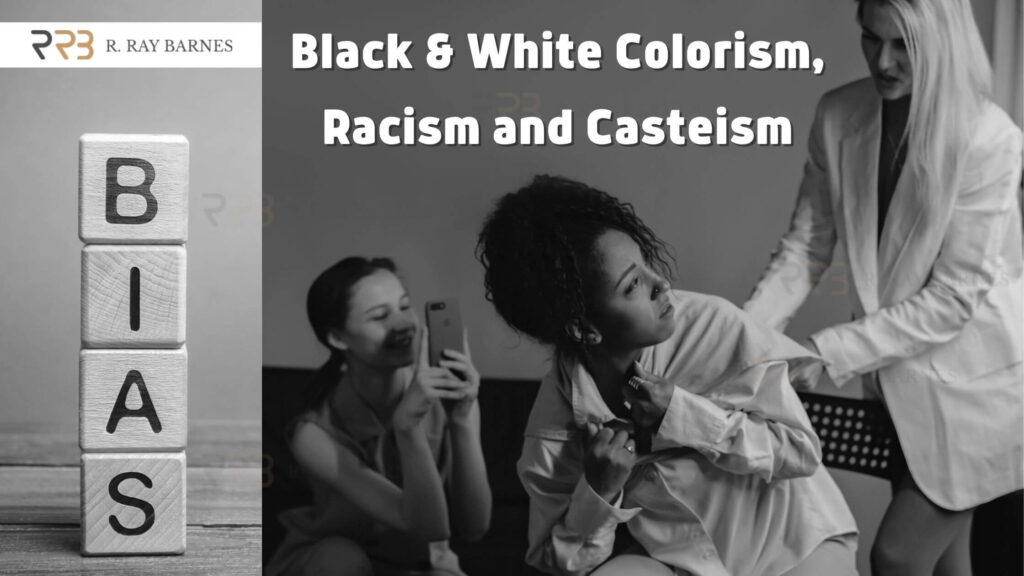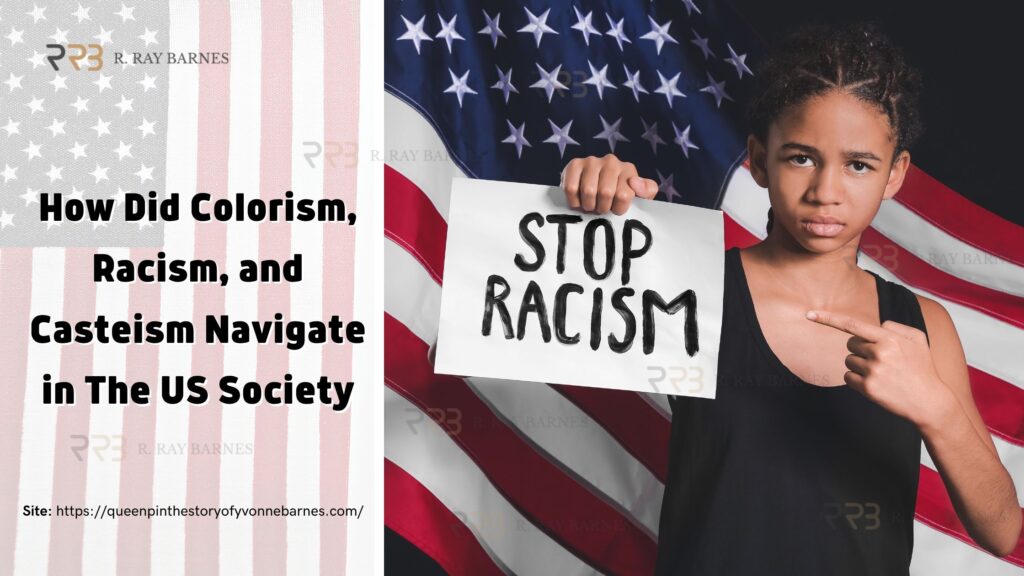Why are black and white people face colorism, racism, and casteism in the USA? Even though, the United States is one of the best countries in the world. May other countries people are dreaming to come of the USA, to see its beauty. But, what is the reason that Americans have colorism, racism, and casteism?
Is Color the Primary Metric for Determining One’s Identity?
Is it the right parameter to divide the globe based on skin color? You must have heard the words yellow, brown, white, and black people. Do you think it is okay to segregate humans into categories based on color? Who did this, by the way?

In the south, east Asian people have Brown Color, while people in east Asia are known as yellow, people in the west are called white, and people from south Africa black. Who made these segregations? Who feels superior to these color divisions? No person would like to create a major self-perception based on his color because we are born with self-love within.
When we are born black, we look in the mirror. We see no white, no brown, no black, just who we are! The term black itself is the result of systemic colorism. Today, if someone says “black lives matter,” they have actually accepted their identities as black. The slogan itself represents the deep-rooted stigma of colorism that is woven within the tapestry of society with its subtle and accentuated hues. Pointing it out and tearing it out would take a major effort, and it might have an impact on every other thing attached to it.
There Are No Black People in Africa, But There Are Many In the USA
Ironic, isn’t it? When you visit an African tribe and ask somebody if they have seen any black person? You wouldn’t find any. Because that’s not how they see themselves, they see themselves as humans. They see themselves just as they are. You would never hear one African calling the other black. They are either Igbo or Yoruba or any other tribal name they feel proud to belong to. For them, ethnicities, values and, beliefs, culture is what makes one African different from the other. The term black people are an imported idea outside Africa. And an outsider should never have the right to define who you are. Does he? What do you think?
Let’s take a small example of ourselves. Each of us has a self-perception for how he/she thinks of us. It’s how we make decisions and choices that shape our character. When a person outside the people you value makes his perception of your identity, would you allow it? Would you let the world know how a third person defines you? How do you feel when that third person imposes his perception of you on your identity? No! That’s who I am. That’s exactly what reaction you have. And that’s valid. So how does one community have the right to define the identity of the other?
There were no black people in the world until some Proud white supremacist imposed his perception upon the earth. Therefore, the term black itself is alienated because it wasn’t originated in Africa. However, black people have to bear all that discrimination, mistreatment, and hostile behavior over the concepts of Colorism, racism, and casteism that they didn’t even create.
The Phenomenon of Colorism, Racism, and Casteism

The phenomenon of colorism, racism, and casteism is a lot more interlinked than one can understand at first glance. In fact, these are really the one thing and induce the presence of each other. And somehow, capitalism provides the preface base for such concepts to grow in society. Let us explain how?
Socio-Economic Status
People in every society are divided based on socioeconomic status. You may call it social classes. The class difference starts with financial capabilities and then gradually moves forward towards differentiation based on appearance, choice, and mindset. Black people in the United States are deliberately pushed into the lower class by having no access to good education, job, and other basic facilities of life.
If you look around the world, people of the lower class are always dark; why? There would be few dark skin people who would be rich, but the rich people always become white regardless of what their original color is. That deep-rooted complex is making people spend their fortune on color, skin & body transformation. What makes one cast superior to the other? Is it the work they do? How well off they are, and their lifestyle. And a good lifestyle, to a great extent, depends on financial soundness.
How Did Colorism, Racism, and Casteism Navigate Through US Society?

Colorism and racism are the remnants of black slavery in the United States and are now seen in the form of racism, casteism, and casteism. People from the lower class who earlier were slaves and peasants are currently employed at lower-level jobs, with those white supremacists who judge and discriminate and create an unnoticeable glass ceiling in their careers and favor lighter skin. In the modern era, it rather feels like the status casteism remained the same only the era changes.
Colorism, racism, and casteism are navigated through American society by the manipulated history that the young generation has perceived. Textbooks play a considerable role in shaping the minds of kids. At the same time, the textbooks that are being taught to the kids in school show a very disparaging comparison of black and white ancestors.
The history of abolishment is not taught as it should be. The identities of black people were shown as negro slaves who came from the continent of Africa as a result of a great migration of slaves. And Americans were addressed as white and just superior masters of them. Wonder how a black American student who studies in the same class as white ones would have felt when studying history.
Colorism, Racism, and Casteism – The European Colonial Perspective
Colorism, racism, and casteism are not restricted to the United States or European countries. It has a tremendous impact on European colonies in southern Asia, eastern Asia, and other parts of the world. Colorism, racism, and casteism are a lot more associated with colonial rule. In the same way, linguistics became another reason for discrimination.
Long after they dissolved these colonies, the concept of colorism they brought to the land remained till now. Such as, in the sub-continent of South East Asia, colorism is still the worst societal disorder. One of the worst things that colorism, racism, and casteism did was they made people of the same skin look down upon each other in the quest to be fairer to each other and be more like Englishmen in every aspect of their language, skin, color, and dressing.
Why Are There so Many Sad Young Gaces?
Decades after Englishmen left the country, colonialized concepts of colorism remained solidly stuck to the society. The desire to be fair is a lot more rampantly growing in societies because that’s been associated with beauty. You may not find people who violently treat others based on color. Rather it’s more that’s more like a silent slow poison that’s been snatching the smiles of young faces because their minds have been strongly wired with an inferiority complex if they are dark.
The sales of cosmetic companies and buying behavior in society reflect the desire of young men and women to seek lighter skin tones, regardless of the color they are born with. Suppose you ask the young generation today if they love themselves. Almost 9 out of 10 dark skin people would not. Because of the inferior treatment they received throughout their life.
Consequently, there is a strong interlink of colorism, casteism, and socioeconomic status in British colonies around the world, be it in Korea, China, India, Vietnam, or any other place in the world. Just like the financial status of peasants and laborers in old times, poor people today, too, have no access to a quality life.
They lead a rough life under the sun and open air, with rough and dark bodies. This itself endorses the concept of colorism, how they look, casteism for how their economic status is, and so on, and racism for how they are treated. The most fitting example of that is Indian Caste System. This is why colorism, racism, and casteism is not just an issue in the United States but it’s all around the world, wherever people of color lives.
Final Thoughts
Having a history of injustice and oppression is a lot more frustrating. It accentuates the fact that generations changed, but black people are still embroiled in unethical issues like Colorism, racism, and casteism. The life of black kids and white is not the same. They have to endure a whole new struggle to self-accept their identities and make people acknowledge that too. If we are living in a civilized society, we don’t have to make efforts to fit in society. But that’s something that every black kid strives for regardless of which country he belongs to.

Such a tale of struggles that author R. Ray Barnes shares with us in his Queen pin book. Where An African American woman pursues her dream while debunking the prejudice of the society she belongs to and eventually becoming a successful blowing player in the United States.
More articles to read:


2 Comments